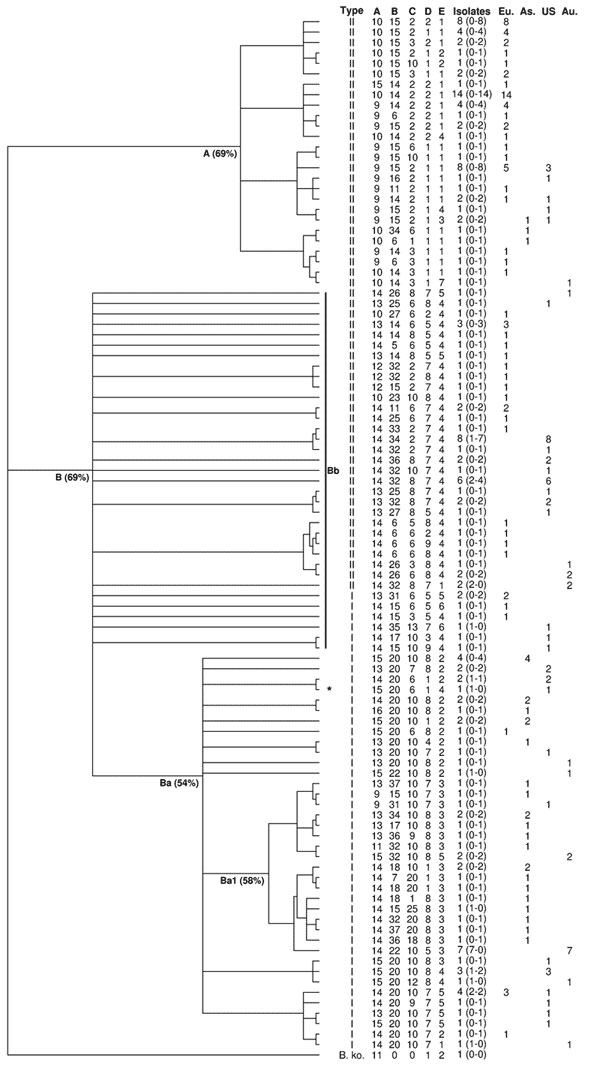Volume 15, Number 5—May 2009
Dispatch
Molecular Epidemiology of Feline and Human Bartonella henselae Isolates
Appendix Figure

Appendix Figure. Dendrogram of the 99 multilocus variable number tandem repeat analysis (MLVA) profiles obtained with 178 isolates and strains. Bootstrap distances are indicated between brackets after the names of the groups and subgroups. The numbers in the brackets after the number of isolates for each profile correspond to the number of isolates from humans and from cats, respectively. As, Asia; Au, Australia-New Zealand; Eu, Europe; US, United States; A, group A; B, group B; Ba, subgroup Ba; Bb, subgroup Bb. *Dog isolate.
Page created: December 20, 2010
Page updated: December 20, 2010
Page reviewed: December 20, 2010
The conclusions, findings, and opinions expressed by authors contributing to this journal do not necessarily reflect the official position of the U.S. Department of Health and Human Services, the Public Health Service, the Centers for Disease Control and Prevention, or the authors' affiliated institutions. Use of trade names is for identification only and does not imply endorsement by any of the groups named above.